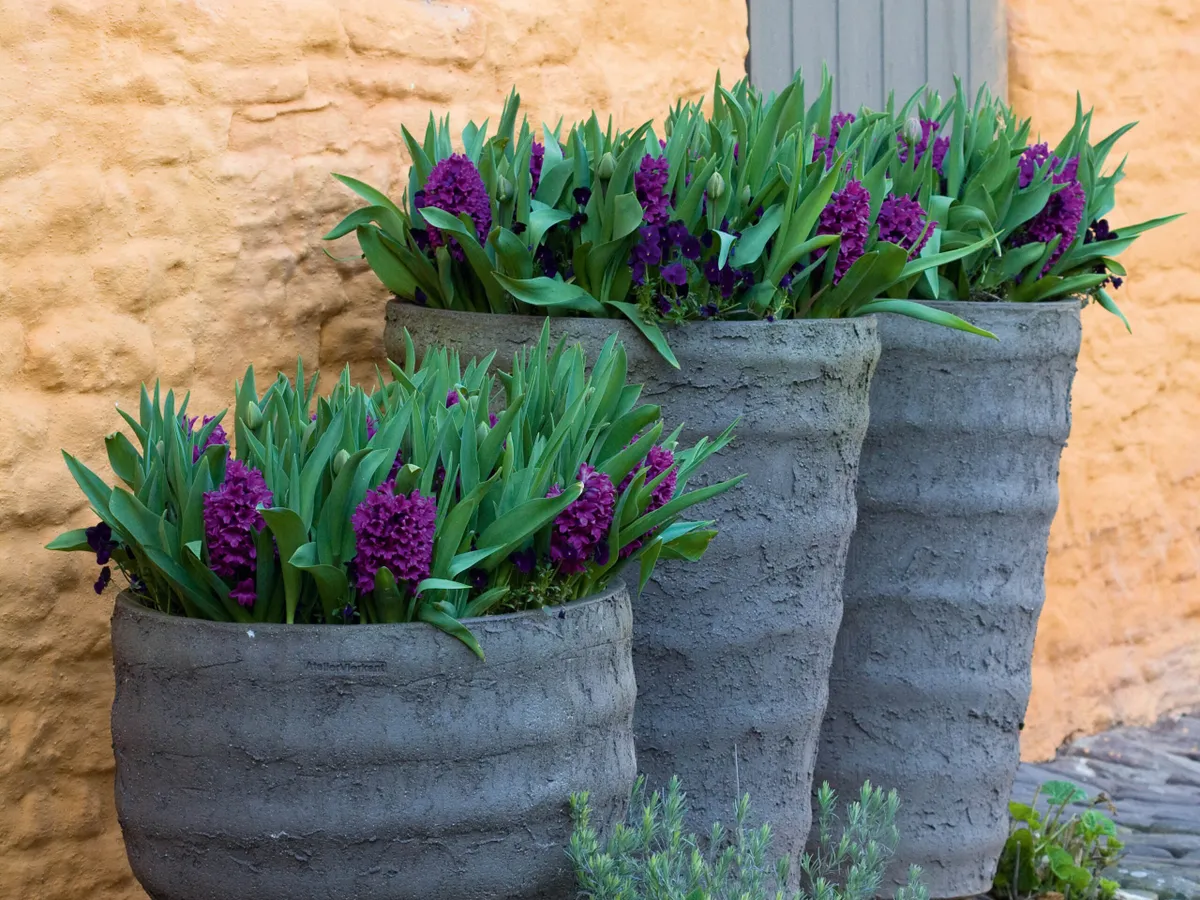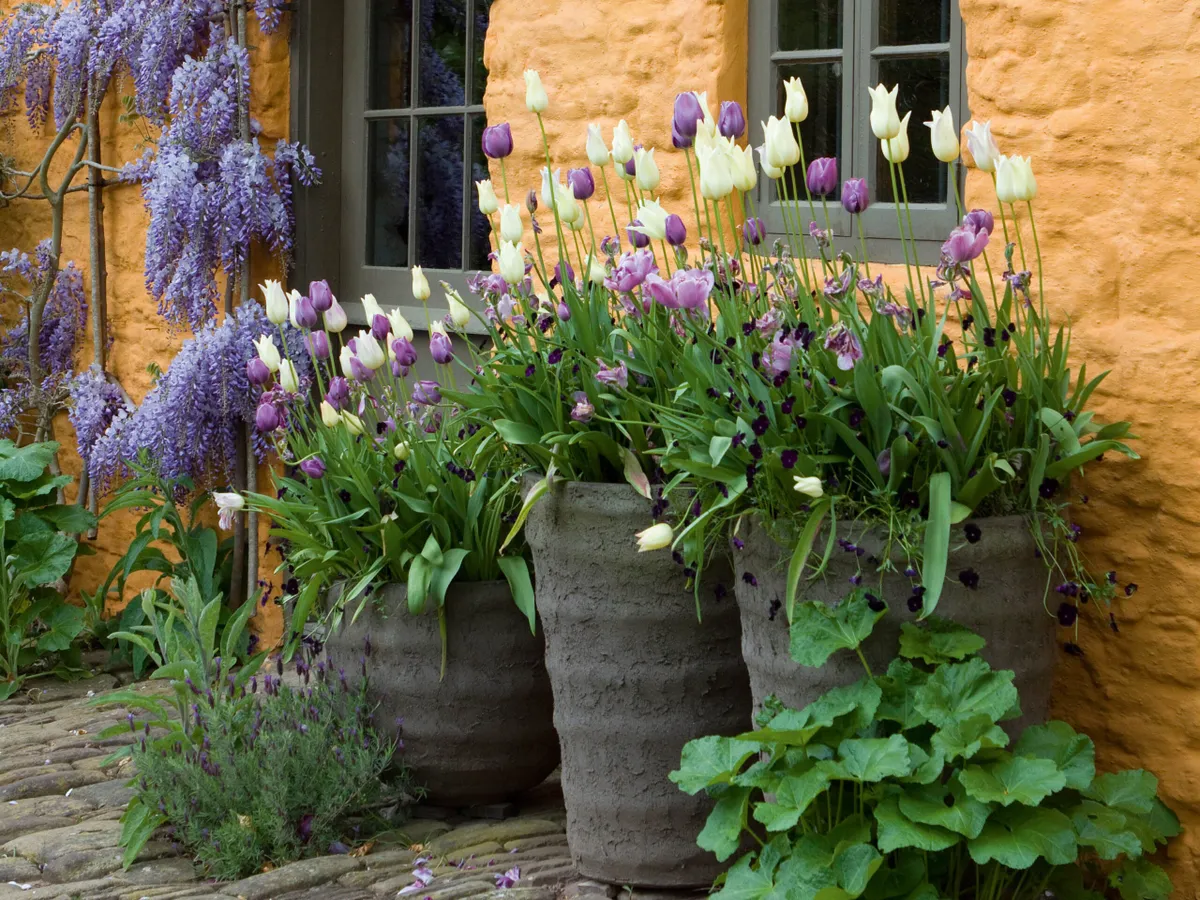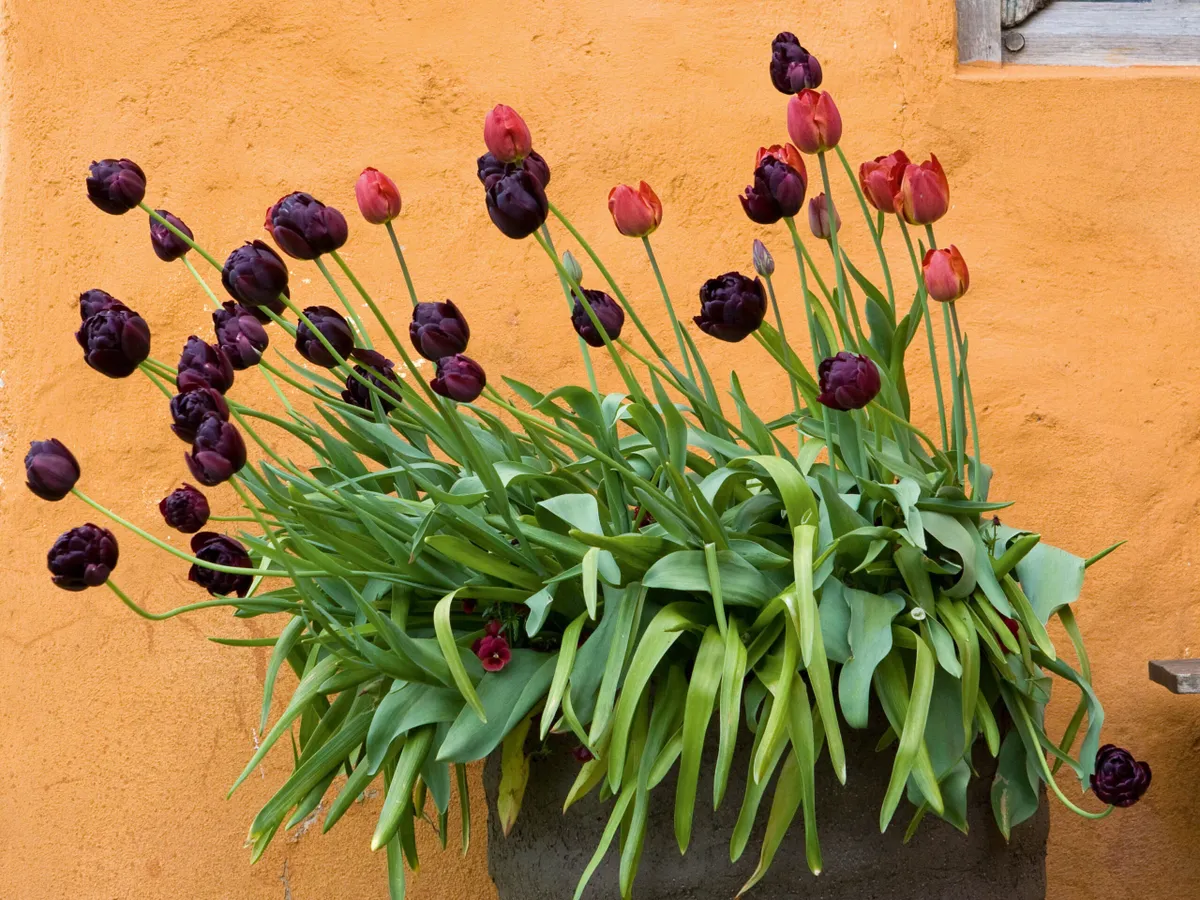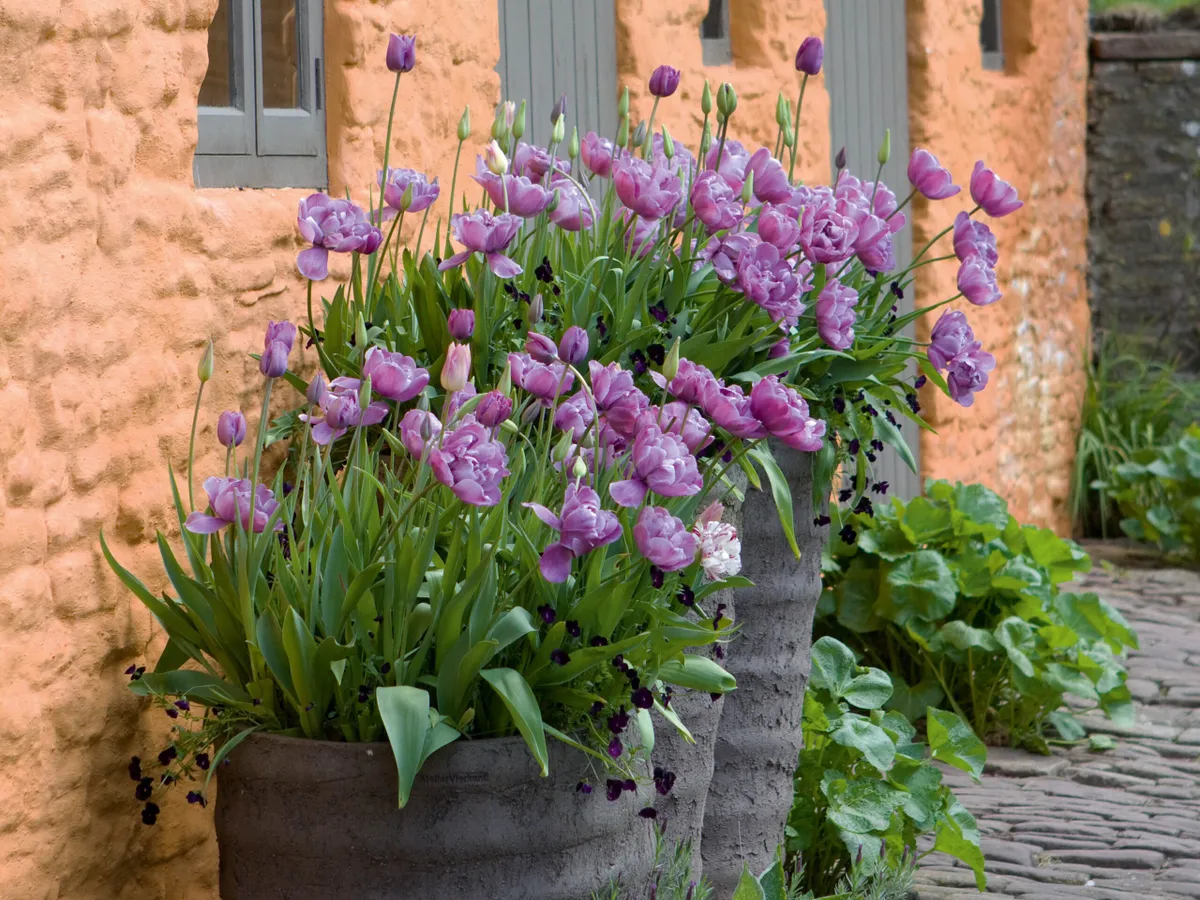I really enjoy using bulbs – tulips in particular – for big, bold displays in pots and these I treat as annuals. What I love about these annual displays is their vigour; tulips and hyacinths in their first year produce big, strong, blowsy flowers that would look out of place in the open ground, but look wonderful packed into containers or special cutting beds.

I look on these annual displays as an opportunity for experimental planting, choosing a different colour theme each year. I aim for a long season of successional flowering, and plant both containers and areas of my kitchen garden, so I can use some for cutting without spoiling the effect.
How to plant a bulb lasagne

I use big pots, and plant in layers, really packing the bulbs in – about 60 bulbs per pot to create a 'bulb lasagne'.
Watch Troy Scott Smith explain how to plant a bulb lasagne outside
I fill the base with about 30cm of compost and put in the first layer, densely packed, of a late tulip, such as ‘Black Hero’, which, because it’s so deep will take time to emerge. The next layer will be a mid-season tulip from within the same colour palette, then another layer, this time using fewer bulbs, because they’ll be overlapping with those below and then the final layer will be early flowering tulips, fewer still.

I may even add another two layers – one of hyacinths, to flower with the early tulips, and on top of that some really early bulbs, such as Muscari (grape hyacinths), which get covered over as the bulbs below emerge. Once the early tulips have flowered I’ll cut the stems back to soil level and I do that successively as the bulbs finish. These pots will flower for over a month, from April to May.

If I’m planting tulips on their own in a pot, I may run out of time and do it after Christmas, which is fine for tulips, but if you’re mixing the tulips with other bulbs, such as hyacinths, you’ll need to plant up by November. Once the pots have finished flowering, the bulbs can be lifted and dried, and then re-planted in the garden. Second- and third-year flowers will be smaller and gentler, but ideal for informal and country borders or under apple trees.
Here are some more of the best tulips to grow